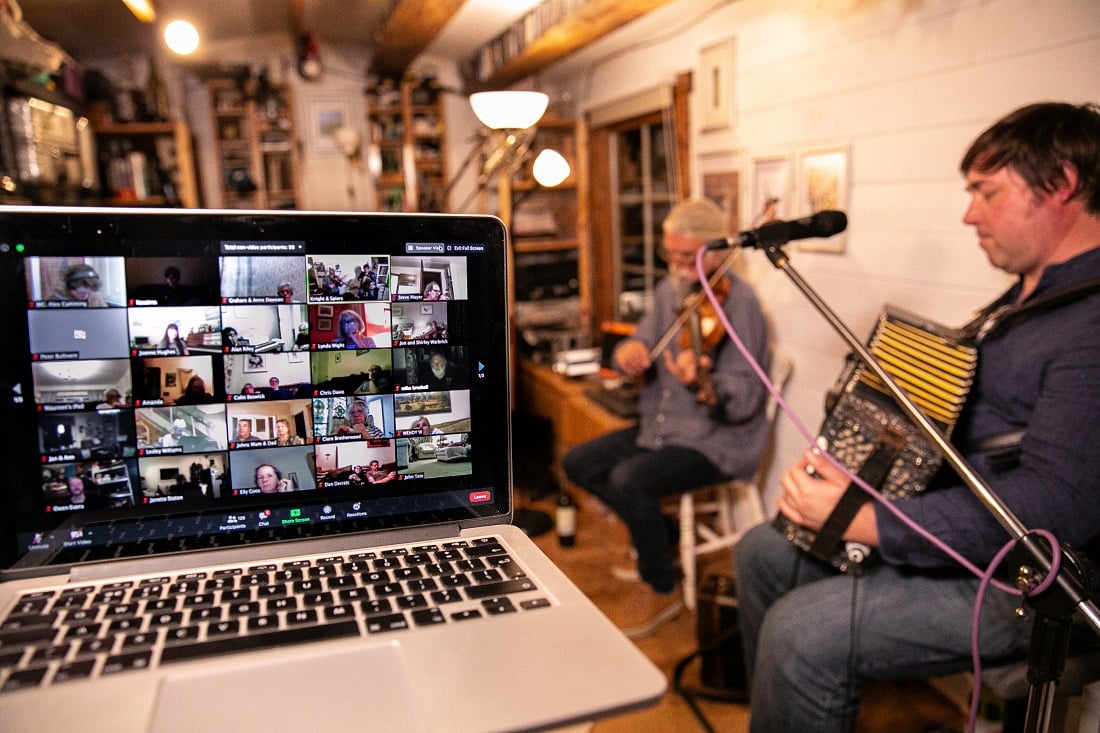
How to replicate the concertgoing experience
The much-vaunted idea of liveness relies on two different but equally important types of connection. Peter Ord examines the technical challenge of putting on a professional quality show from an artist’s own home.
The UK live music industry is hanging by a thread and with more tours being cancelled, it is not surprising that artists and freelance professionals are questioning whether they have a viable future in the industry. Many artists have turned to streaming on social media with donation links; however, not only does this ‘virtual busking’ bypass the wider music infrastructure, but it may also devalue live music. Is it possible to curate and promote properly produced and fully live online concerts while retaining the magic of the live concert experience for both artist and audience?
The technical challenge
With Live To Your Living Room we’re trying to do just that: create a virtual venue that programs and promotes two gigs or concerts a week. We take national and international artists, predominantly from the folk, roots and acoustic scene, who would typically tour 200-500 seat arts venues and connect them in intimate online events, streaming direct from their home into the audiences’ living rooms via Zoom. The key to it all for us is having a truly live event. No pre-records, no ‘watch it again’; each is a live event that captures the experience of an audience coming together with an artist for the one-time magic of a performance.
There are a number of issues facing events like this, not least being the technical challenge of putting on a professional quality show from an artist’s home. As things stand, we have a team of sound engineers who are able to mix each event in real time from their own homes, making adjustments in levels, EQ and effects throughout the performance just as they would in a venue. We achieve this by sending a small digital desk and a laptop to each artist. We’ve opted for the Behringer XR18 which connects to the laptop provided to serve as a virtual mix station using the X Air Edit app. The sound engineer can then use a remote access tool to dial into the laptop and access the mix platform, adjusting the sound as they hear it on Zoom.
Of course, there are still limitations. The biggest of these is that, unlike a venue where everyone is listening to the same system, the sound will only ever be as good as the audience members’ set up, although our events have consistently been gig-level quality. Currently, the sound set up is all we provide for artists and we’re relying on their personal webcams for the visual element of the stream. This does mean the quality is variable between events, and while this hasn’t caused any major problems yet, it’s certainly on our radar as the next step forward. While I have found technical solutions that would allow us to provide equipment to artists to improve this and potentially add multiple camera angles, I’m concerned about how much technical set up we ask of a performer. There is a fine balance between ensuring high stream quality and allowing the talent space to be an artist and deliver their best possible performance.
That ‘foyer feeling’
Using a video conferencing application as our main delivery platform was initially a decision we made based on ease. It was free for users to download and access events, and the ever-changing world meant most were becoming comfortable with the platform. But we never could have predicted the genuinely emotional response of artists and audiences to seeing fans and friends from around the world, many of whom would never be in the same room together or only see each other once a year at a festival, coming together to experience music. This interaction has become the cornerstone of our events. We try to capture the atmosphere of a live concert by encouraging audiences to unmute to applaud after pieces and hold Q&A sessions to allow for intimate interactions between the audience and artist. To achieve this, each event has a full team behind it including an MC who introduces and facilitates the evening, as well as a set of ‘muting-ninjas’ who keep on top of any stray audience unmuting!
We’re also looking to develop audience connections – something we’ve termed ‘foyer moments’. Currently we have audience members use the chat function in Zoom to talk before and after the show and during the interval. While this provides some of that ‘foyer’ feeling, it would be great to find an efficient way to allow groups of friends to chat about the show.
An online future
Since the first lockdown we have paid out over £70,000 to industry professionals including artists and production staff. Our audiences are steadily growing and artists are embracing online events as part of a long-term music industry solution. Surveys show there is a real appetite among audiences for online events too, particularly with people who were already struggling to access traditional performance spaces.
Yes, there are limitations. We’re still exploring new ways to further develop the concertgoing experience. But as James Fagan and Nancy Kerr put it: “This is better than making do, this is something new”. Moving forward, as restrictions ease and the venues look to reopen their doors to tours and audiences, I believe the online gig will form part of the industry’s future, with artists including streamed shows on ‘dead’ days between venues. We just have to make sure we can do enough now for the performers and event producers to survive until then.
Peter Ord is Founder of Haystack Records
![]() @haystackrecords
@haystackrecords

Join the Discussion
You must be logged in to post a comment.